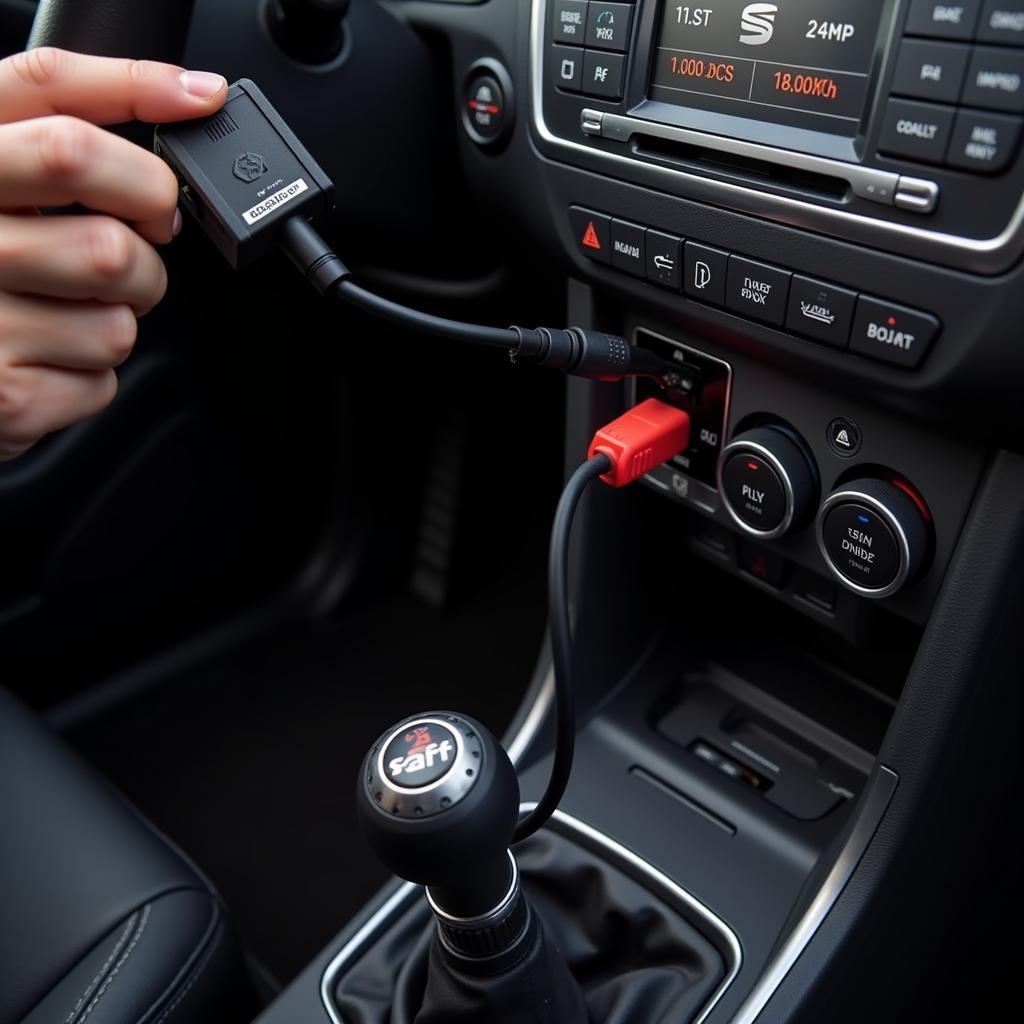The 2009 Audi A4 brake pad warning light is a crucial safety feature that alerts you when your brake pads are worn and need replacement. Ignoring this warning can lead to costly repairs and compromise your safety. This guide provides a comprehensive understanding of the brake pad warning light, its causes, and how to address them, including remote diagnostic, programming, and software installation solutions.
If the warning light illuminates, it’s essential to act promptly. See our guide on 2009 audi a4 brake pad warning light reset.
Understanding the Brake Pad Warning Light
The brake pad warning light is part of your Audi A4’s electronic brake monitoring system. This system continuously monitors the thickness of your brake pads and triggers the warning light when they reach a critical wear level. The light is typically amber or yellow and often accompanied by a chime.
Why is My 2009 Audi A4 Brake Pad Warning Light On?
While worn brake pads are the most common cause, several other factors can trigger the brake pad warning light on your 2009 Audi A4:
- Worn Brake Pads: This is the most frequent reason. Brake pads have wear indicators that contact the rotor when the pad material gets too thin.
- Faulty Brake Pad Wear Sensor: The sensor itself can malfunction due to damage or corrosion, triggering the light even with sufficient pad material.
- Low Brake Fluid: Low brake fluid can also activate the warning light. This usually indicates a leak in the brake system, requiring immediate attention.
- Brake System Malfunction: A more serious issue, like a problem with the ABS (Anti-lock Braking System), could trigger the warning light.
What to Do When the Warning Light Comes On
If your 2009 Audi A4 brake pad warning light illuminates, follow these steps:
- Check Your Brake Pads: Visually inspect your brake pads through the wheel spokes. If they appear thin or you notice metal-on-metal contact, it’s time for a replacement.
- Check Brake Fluid Level: Locate the brake fluid reservoir under the hood and check the fluid level. If it’s low, top it off and monitor for leaks. A persistent drop in fluid level indicates a leak that needs professional attention.
- Seek Professional Diagnosis: If the brake pads and fluid level seem fine, it’s best to consult a qualified mechanic. They can perform a thorough inspection, including diagnostic scanning, to pinpoint the exact cause of the warning light.
You can also check out resources like a4 brake pad warning light for further assistance.
Remote Diagnostics and Software Solutions
In today’s automotive landscape, remote diagnostics and software solutions play a significant role in addressing vehicle issues. Advanced diagnostic tools can remotely access your vehicle’s computer system, pinpoint the problem area, and even program or reprogram certain components. This can be particularly beneficial in diagnosing complex issues related to the brake system warning light.
“Remote diagnostics can save valuable time and money,” says John Miller, a certified automotive technician with 20 years of experience. “By remotely analyzing the vehicle’s data, we can often identify the root cause of the problem without the need for a physical inspection, allowing for quicker repairs.”
Preventing Future Brake Pad Warning Light Issues
Regular maintenance is crucial for preventing future issues with your brake system. This includes:
- Routine Brake Inspections: Have your brakes inspected every 12,000 to 15,000 miles, or as recommended in your owner’s manual. This allows technicians to identify and address potential problems early on.
- Quality Brake Pads: Invest in high-quality brake pads. They offer better performance, longevity, and contribute to a safer driving experience.
- Mindful Driving Habits: Aggressive driving habits, such as hard braking and rapid acceleration, can contribute to premature brake pad wear.
“Choosing the right brake pads can significantly impact their lifespan and overall performance,” adds Miller. “Investing in quality components is a worthwhile investment in your safety and the long-term health of your vehicle.”
Conclusion
The 2009 Audi A4 brake pad warning light serves a vital purpose in ensuring your safety and the longevity of your vehicle. Understanding its function and taking appropriate action when it illuminates is crucial. Regular maintenance and prompt attention to any warning signs will help keep your Audi A4’s braking system in optimal condition. Remember to consult resources like audi brake pad warning light a4 or audi brake system warning light for more information.
FAQ
- What does the 2009 Audi A4 brake pad warning light look like? It’s typically an amber or yellow symbol, often resembling a circle with parentheses around it.
- Can I drive with the brake pad warning light on? It’s not recommended. Driving with worn brake pads can compromise your stopping power.
- How much does it cost to replace brake pads on a 2009 Audi A4? The cost varies depending on the type of brake pads and labor rates.
- How often should I check my brake fluid? Check your brake fluid level at least once a month.
- Can I reset the brake pad warning light myself? While possible, it’s recommended to have a professional reset the light after addressing the underlying issue.
- What is the brake pad wear sensor? It’s a small sensor embedded in the brake pad that triggers the warning light when the pad reaches a certain wear level.
- What if the light stays on after replacing the brake pads? This could indicate a faulty sensor or other brake system issue, requiring further diagnosis.

